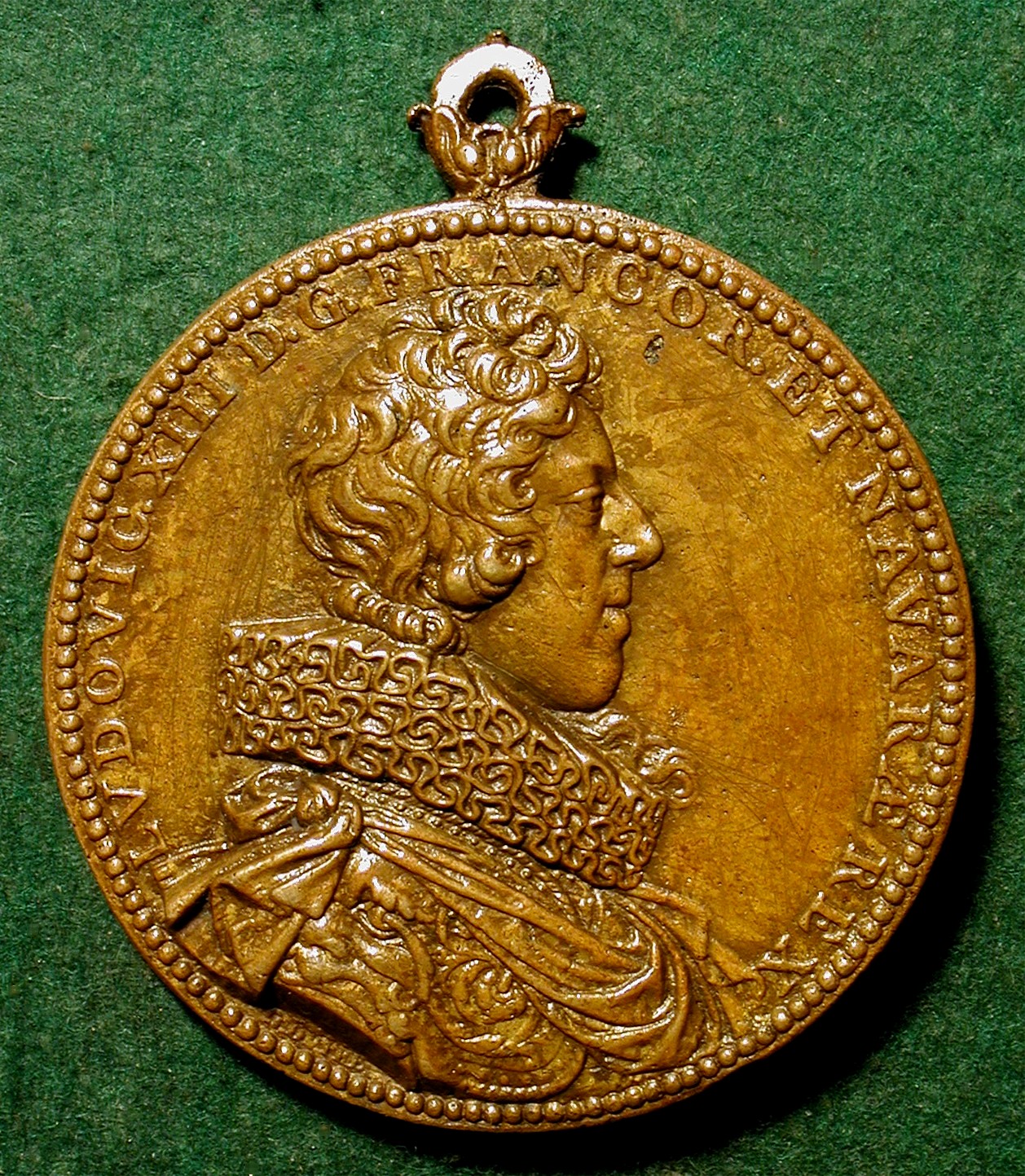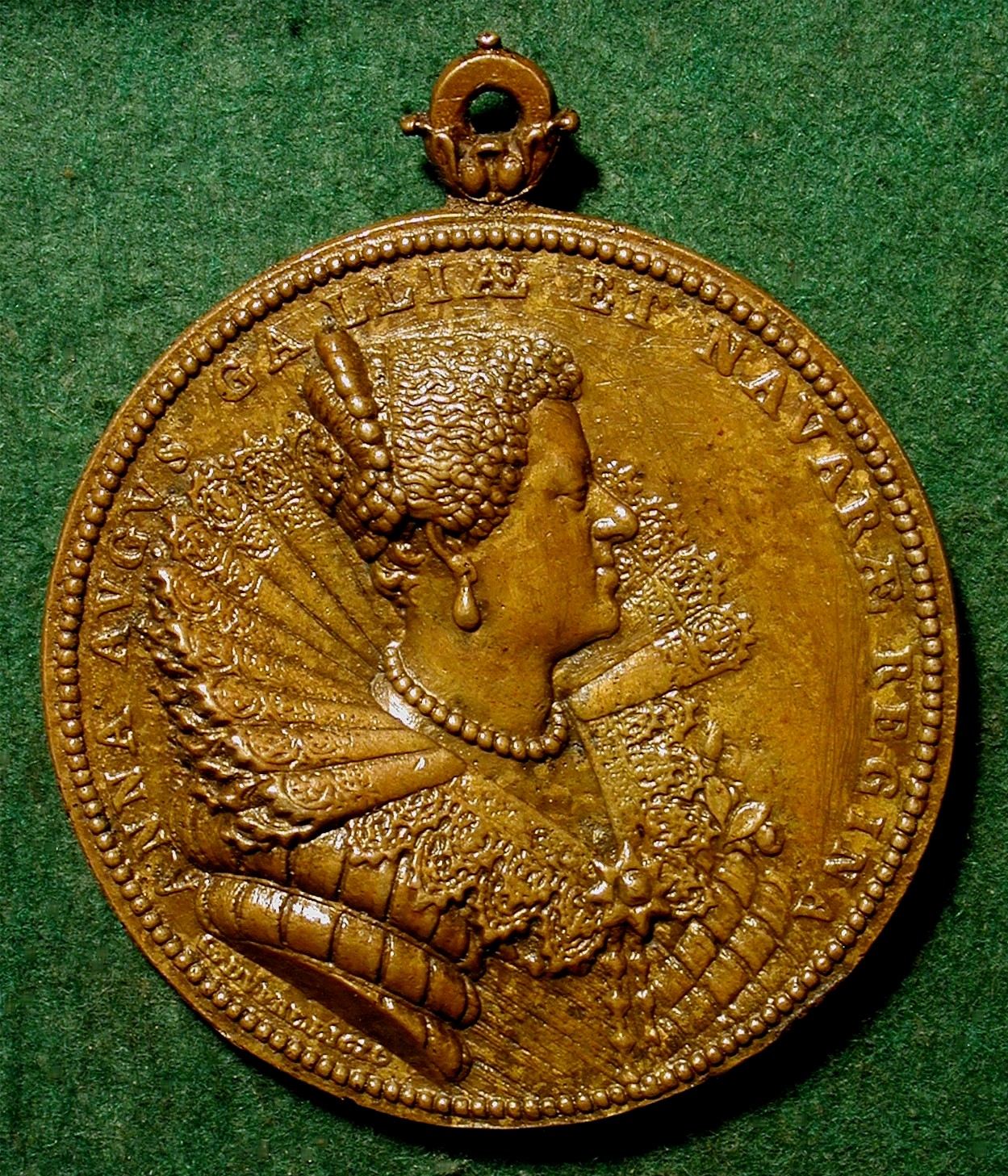

Historical and
Commemorative Medals
Collection of Benjamin Weiss
|
LOUIS XIII AND ANNE OF AUSTRIA Dupre, G.: France, 1620/1623, Bronze (cast), 60 mm Louis XIII (The Just) (1601-1643), King of France (1610-1643), was the son of Henry IV and Marie de Medici. He became king at the age of nine on his fatherís assassination in 1610, with his mother assuming full powers of regent. One of Marie de Mediciís major objectives at that juncture was to bring France into an alliance with Spain and Austria. She decided, therefore, that Louis was to marry Anne of Austria, the daughter of the Spanish king, Philip III, and they were, in fact, married in 1615. The relationship between the young king and his mother, however, was often hostile, as was his relationship with Cardinal Richelieu, his wife Anneís principal advisor. Richelieu, nevertheless, became the most important member of the kingís council, and was in large measure responsible of directing Franceís policy. This policy, which was often openly hostile to non-Catholic members of the community, brought Louis into unremitting conflict with the Protestants. Through Richelieuís influence, Huguenot strongholds were captured, Italy was invaded and France entered the Thirty Yearís war (1618-1649) against Habsburg Spain. Despite several attempts to reduce his power, Richelieu continued to retain his ascendancy over the king until the cardinalís death in 1642. Louis and Anne had a child, the future Louis XIV. Anne of Austria (1601-1666) was the daughter of Philip III of Spain (of the house of Austria, i.e., of the Habsburg dynasty). Her marriage to Louis XIII was not a happy one as Louis was cold in his attitude towards her and the Franco-Spanish hostilities in the Thirty Yearsí War cut her off from close relations with her family in Spain. In addition, the omnipotent minister Cardinal Richelieu prevented her from exercising any rival influence over her husband. She also suffered great humiliation in the "affair of Val-de-Grace" when the chancellor Pierre Seguier was sent to search her person and to interrogate her on the ground that she was frequenting the convent of Val-de-Grace in order to conceal a treasonable correspondence with the Spaniards. Her husband died in 1643, at which time she ruled France as regent in close alliance with Cardinal Mazarin, Richelieuís successor. Anneís regency ended in 1651 when Louis XIV was proclaimed of age to rule.
LINK to portrait of Louis XIII, Anne of Austria, and the Dauphin (from wikimedia.org) |
|